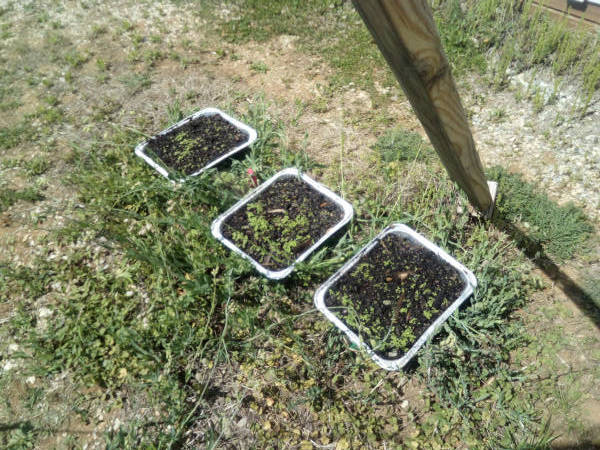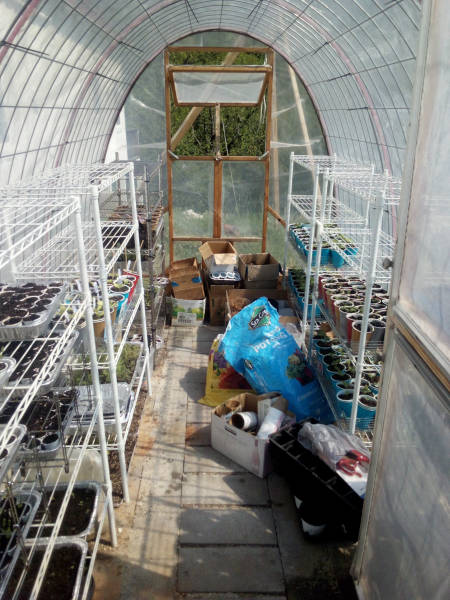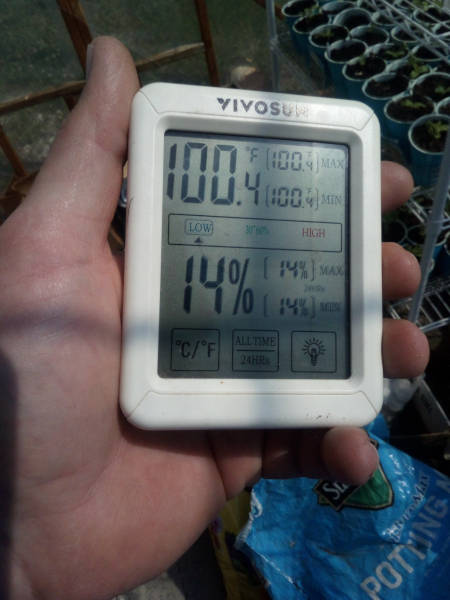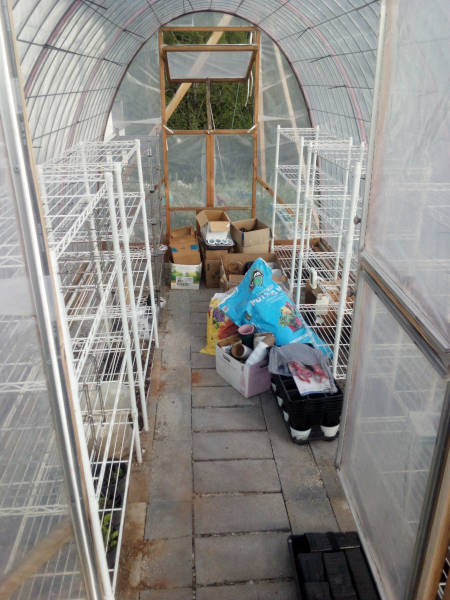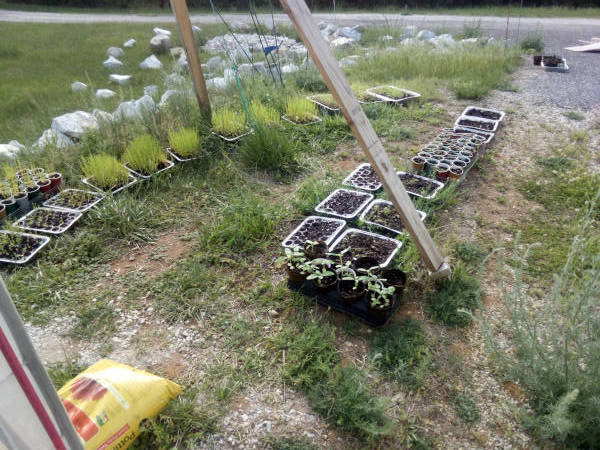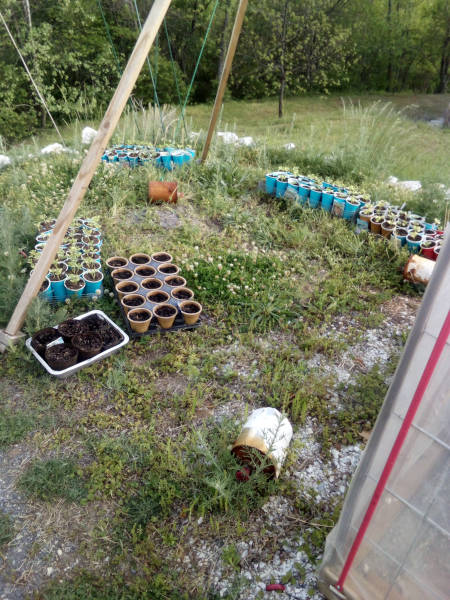May/2nd/2025 Update: Honeybee Splits and Greenhouse Status
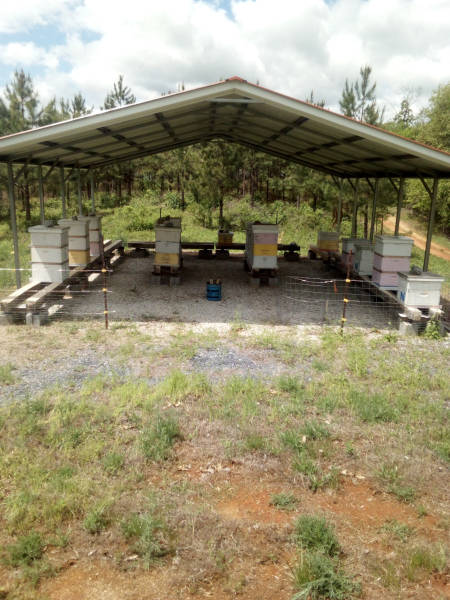 I managed to find some time to check up on my bees last weekend(April/26th), so at the moment I am happy to say I have completed my spring splits and am on track in regards to preparations for this Spring's nectar flow and honey harvest. It could have been better, and i am still having some big problems with cross-comb because i still haven't had the time to do the modifications and repairs i want to do on my frames, but nevertheless i made the splits, though i must confess that the result ended up being somewhat crude, and i did not check frames for brood or look for the queens.
I managed to find some time to check up on my bees last weekend(April/26th), so at the moment I am happy to say I have completed my spring splits and am on track in regards to preparations for this Spring's nectar flow and honey harvest. It could have been better, and i am still having some big problems with cross-comb because i still haven't had the time to do the modifications and repairs i want to do on my frames, but nevertheless i made the splits, though i must confess that the result ended up being somewhat crude, and i did not check frames for brood or look for the queens.
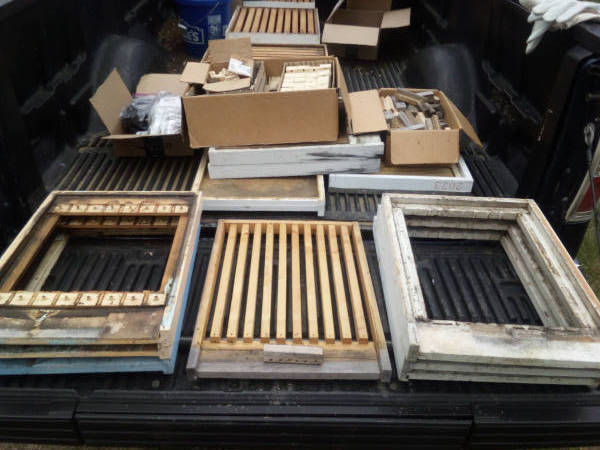 The bees were fairly well behaved and not exceptionally rude for this time of season. I did get a few dive bombers, and a few stings on my clothing, though my new hood and gloves i bought over winter, plus a thick denim shirt tucked into my jeans did a great job at preventing any stings from getting through to my skin. I tried my best to be carefull, though a few bees did get squished; it was sort of hard to avoid because my cross-comb problem means that i am unable to handle individual frames, and so I was lifting whole 10-frame deep hive-bodies loaded full of bees and comb. It would be nice if my frames were in better shape, and i could do things properly, frame by frame, but that is simply not the case this go around. Hopefully i'll get some time soon to work on fixing them before i plan to do more splits later this summer(after the honey harvest).
The bees were fairly well behaved and not exceptionally rude for this time of season. I did get a few dive bombers, and a few stings on my clothing, though my new hood and gloves i bought over winter, plus a thick denim shirt tucked into my jeans did a great job at preventing any stings from getting through to my skin. I tried my best to be carefull, though a few bees did get squished; it was sort of hard to avoid because my cross-comb problem means that i am unable to handle individual frames, and so I was lifting whole 10-frame deep hive-bodies loaded full of bees and comb. It would be nice if my frames were in better shape, and i could do things properly, frame by frame, but that is simply not the case this go around. Hopefully i'll get some time soon to work on fixing them before i plan to do more splits later this summer(after the honey harvest).
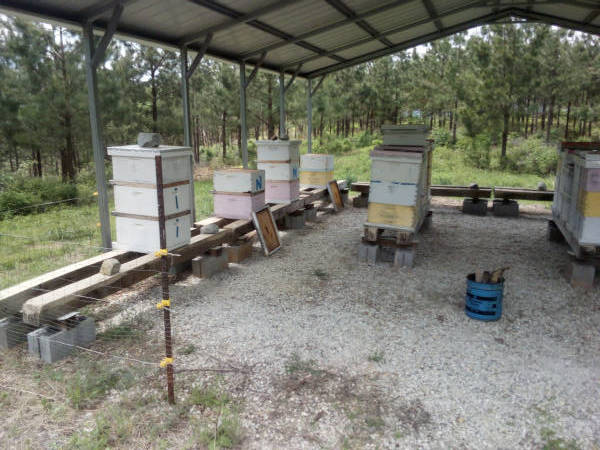
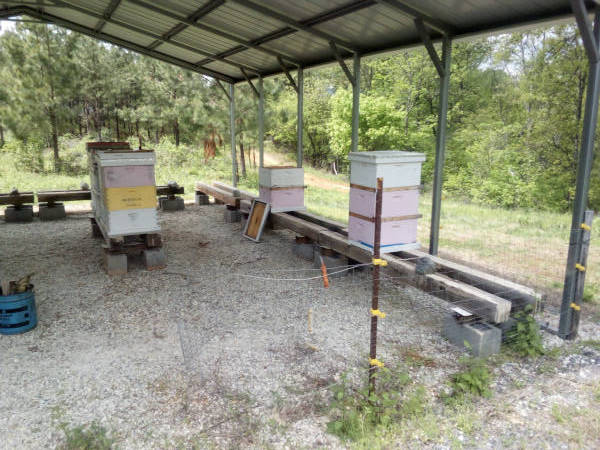 Plastic foundation is a non-starter for my whole setup; it does not survive my hot-air hive melting and sterilization apparatus. I am hoping that after i have finished fixing up all my frames with tighter wiring and installed little wood shims into all the top-grooves on all my groove-frames then the bees should begin to get the hint, and start going straight(fingers crossed). My cross-comb problem has sort of snuck up on me over the years, as i have melted more and more of my frames with plastic inserts. The bees seem to do ok with a few missing foundations on frames, but somewhere along the line i seem to have exceeded a threshold and it has been cross-comb ever since. Sorry, no pics of beautiful honeycomb this time.
Plastic foundation is a non-starter for my whole setup; it does not survive my hot-air hive melting and sterilization apparatus. I am hoping that after i have finished fixing up all my frames with tighter wiring and installed little wood shims into all the top-grooves on all my groove-frames then the bees should begin to get the hint, and start going straight(fingers crossed). My cross-comb problem has sort of snuck up on me over the years, as i have melted more and more of my frames with plastic inserts. The bees seem to do ok with a few missing foundations on frames, but somewhere along the line i seem to have exceeded a threshold and it has been cross-comb ever since. Sorry, no pics of beautiful honeycomb this time.
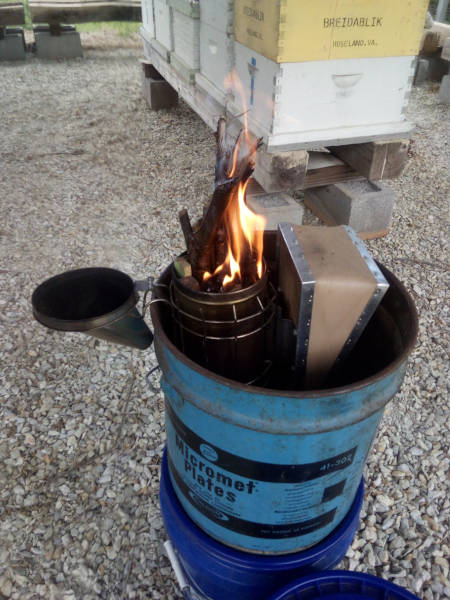
 As time goes on i have sort of become more accustomed to dealing with things like cross-comb, and at this point it is sort of becoming just part of what i do. Also burr-comb, all of it is a good source for honey and wax, and if the bees like it who am i to complain. At this point I still do not own a centrifuge, and though i still have as an ultimate goal to get all my comb nice and straight so that it will fit in an extractor, i am actually finding that i do just fine with simply straining crushed comb in a 5 gallon bucket. If there weren't laws against it might actually like to simply convert all my hives to a frameless setup; we will see; maybe i will write my state rep(maybe); in the meantime i will continue working on fixing up my frames.
As time goes on i have sort of become more accustomed to dealing with things like cross-comb, and at this point it is sort of becoming just part of what i do. Also burr-comb, all of it is a good source for honey and wax, and if the bees like it who am i to complain. At this point I still do not own a centrifuge, and though i still have as an ultimate goal to get all my comb nice and straight so that it will fit in an extractor, i am actually finding that i do just fine with simply straining crushed comb in a 5 gallon bucket. If there weren't laws against it might actually like to simply convert all my hives to a frameless setup; we will see; maybe i will write my state rep(maybe); in the meantime i will continue working on fixing up my frames.
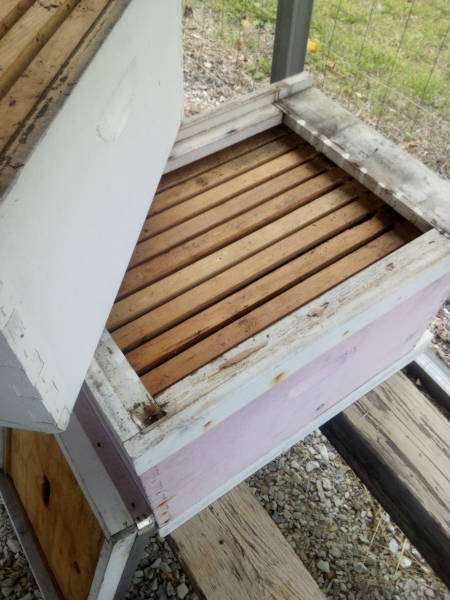
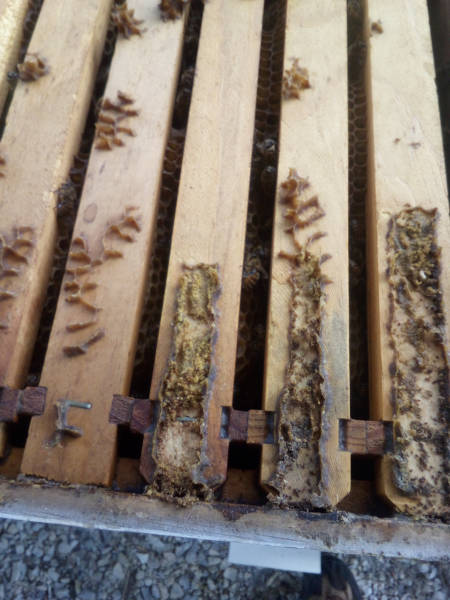
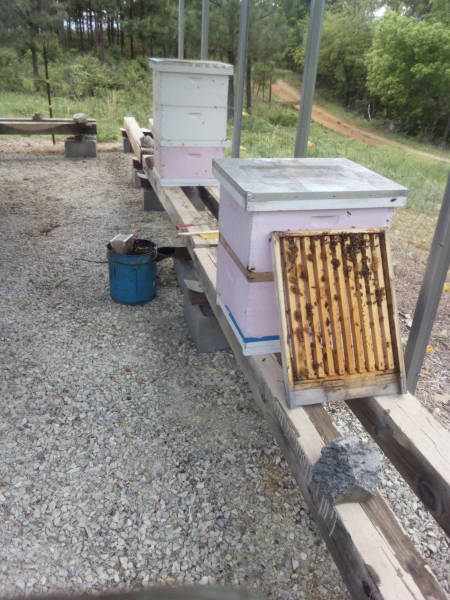
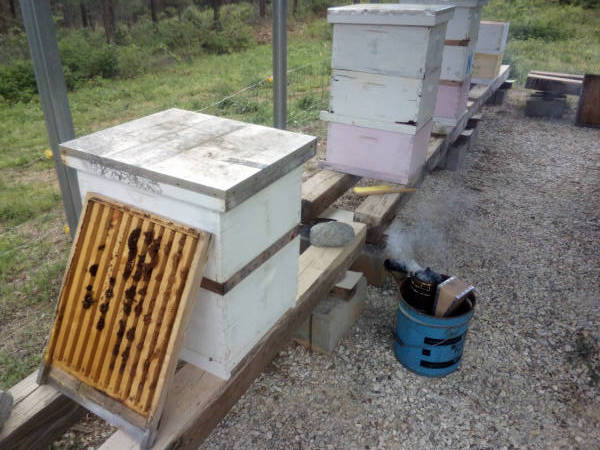
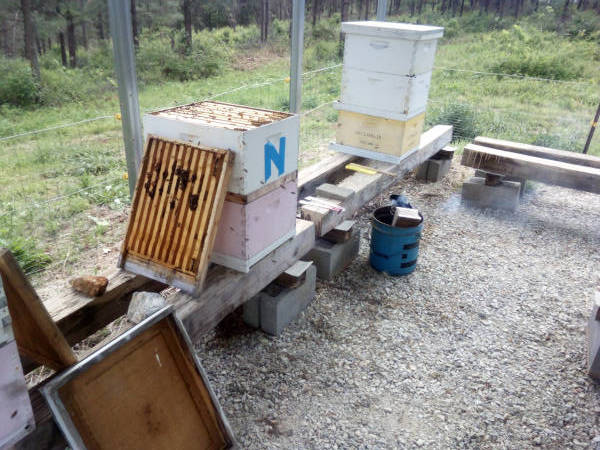 If you are astute, you probably noticed all the funky slatted upper landing-boards on all my hives. That is an experiment i have been conducting for a few years now, and the design is still changing. The oldest version is actually the one you see me removing from the hives during this session. I made a subsequent design involving removable slats that contained a void space in which for the bees to build comb. At the moment I have decided that both my first two designs created an unnecessary obstacle to the bees building down across hive-bodies. Perhaps i was not exact enough when adhering to bee-space in their construction, but at this point, i am thinking maybe simpler is better, and perhaps having a simple open void with no slats will be the best. The bees will fill it with comb, and glue the boxes together, but I'm thinking it won't be to hard to cut this later with a wire to separate the boxes when the time comes. Also, my bee sense(and some articles i have been reading)tells me that more continuous comb should help the bees build down and the queen to travers vertically within the hive. The landing boards are just because i want to have upper entrances without drilling holes in my boxes. Funny thing, it seems like i just happened to grab my oldest most beat up hive-bodies when setting up for this latest session, not sure why but they were the ones with the new frames in them.
If you are astute, you probably noticed all the funky slatted upper landing-boards on all my hives. That is an experiment i have been conducting for a few years now, and the design is still changing. The oldest version is actually the one you see me removing from the hives during this session. I made a subsequent design involving removable slats that contained a void space in which for the bees to build comb. At the moment I have decided that both my first two designs created an unnecessary obstacle to the bees building down across hive-bodies. Perhaps i was not exact enough when adhering to bee-space in their construction, but at this point, i am thinking maybe simpler is better, and perhaps having a simple open void with no slats will be the best. The bees will fill it with comb, and glue the boxes together, but I'm thinking it won't be to hard to cut this later with a wire to separate the boxes when the time comes. Also, my bee sense(and some articles i have been reading)tells me that more continuous comb should help the bees build down and the queen to travers vertically within the hive. The landing boards are just because i want to have upper entrances without drilling holes in my boxes. Funny thing, it seems like i just happened to grab my oldest most beat up hive-bodies when setting up for this latest session, not sure why but they were the ones with the new frames in them.
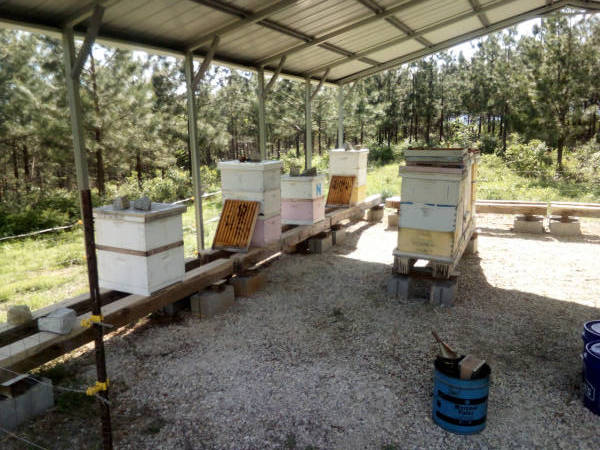
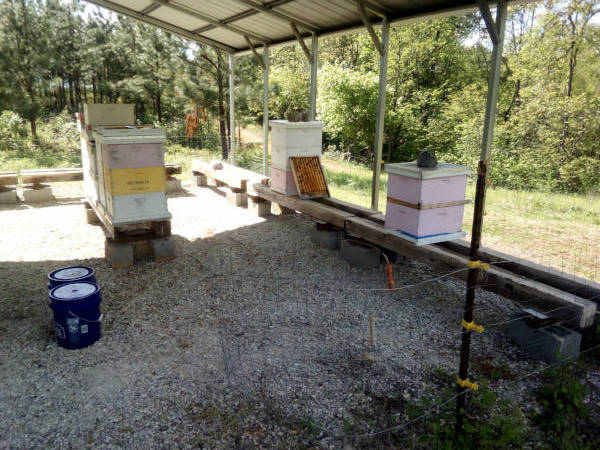
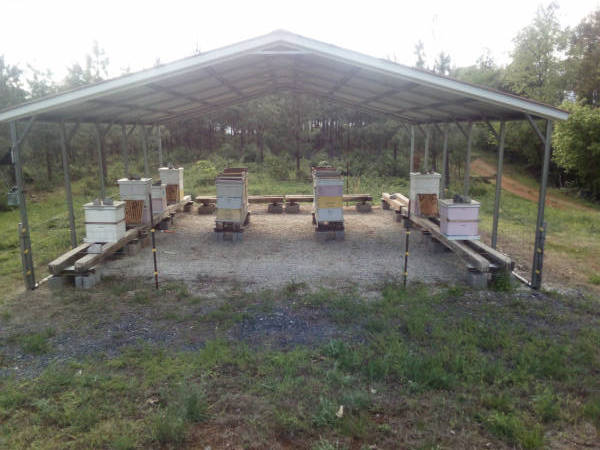 Now that you know i use cruddy old boxes, I should probably tell you that my hot-air hive melter has a port for a thermometer, and i have measured that it will reach 320°F easily. Actually, it gets hotter and will even start a fire if left long enough unsupervised. 320°F is noted by some authorities as a sterilization temperature for American Foulbrood(AFB) spores, and can serve as an alternative to burning equipment. Some localities still insist on burning infected equipment, and so consequently I am always living in fear to some degree that i might get a call from the state bee inspector and one thing leads to another... Honestly, i don't have the equipment or knowledge to do a proper test myself, though I feel pretty confident my setup kills most everything, and based on the listed temperature from a few different authorities, i feel confident that 30 minutes above 320°F is enough to kill every little thing inside a beehive, and i swear i have never had AFB - i don't even know what it looks like.[;P] In all seriousness, i should probably do a little more research, but my focus lately has sort of been more on repairs and modifications to my equipment, and not figuring out lab tests and bee medicine. Actually, I am probably what you would call treatment free as far as bees go, and i am not interested in doing it any other way. Here are some sources about sterilizing AFB spores:
https://static1.squarespace.com/static/56818659c21b86470317d96e/t/618bb05f2e983013a8063d4b/1636544607361/Sterilising_infected_equipment_%281%29.pdf
"...Hive parts need to be dipped in paraffin wax at 160oC for ten minutes..."
https://mda.maryland.gov/plants-pests/Documents/Presentation-AFB.pdf
"...Dip cleaned parts in paraffin wax heated to 320OF (160OC) for 10 minutes..."
Now that you know i use cruddy old boxes, I should probably tell you that my hot-air hive melter has a port for a thermometer, and i have measured that it will reach 320°F easily. Actually, it gets hotter and will even start a fire if left long enough unsupervised. 320°F is noted by some authorities as a sterilization temperature for American Foulbrood(AFB) spores, and can serve as an alternative to burning equipment. Some localities still insist on burning infected equipment, and so consequently I am always living in fear to some degree that i might get a call from the state bee inspector and one thing leads to another... Honestly, i don't have the equipment or knowledge to do a proper test myself, though I feel pretty confident my setup kills most everything, and based on the listed temperature from a few different authorities, i feel confident that 30 minutes above 320°F is enough to kill every little thing inside a beehive, and i swear i have never had AFB - i don't even know what it looks like.[;P] In all seriousness, i should probably do a little more research, but my focus lately has sort of been more on repairs and modifications to my equipment, and not figuring out lab tests and bee medicine. Actually, I am probably what you would call treatment free as far as bees go, and i am not interested in doing it any other way. Here are some sources about sterilizing AFB spores:
https://static1.squarespace.com/static/56818659c21b86470317d96e/t/618bb05f2e983013a8063d4b/1636544607361/Sterilising_infected_equipment_%281%29.pdf
"...Hive parts need to be dipped in paraffin wax at 160oC for ten minutes..."
https://mda.maryland.gov/plants-pests/Documents/Presentation-AFB.pdf
"...Dip cleaned parts in paraffin wax heated to 320OF (160OC) for 10 minutes..."
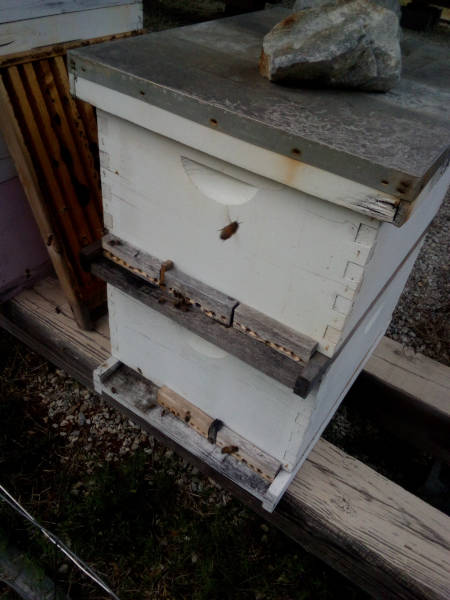
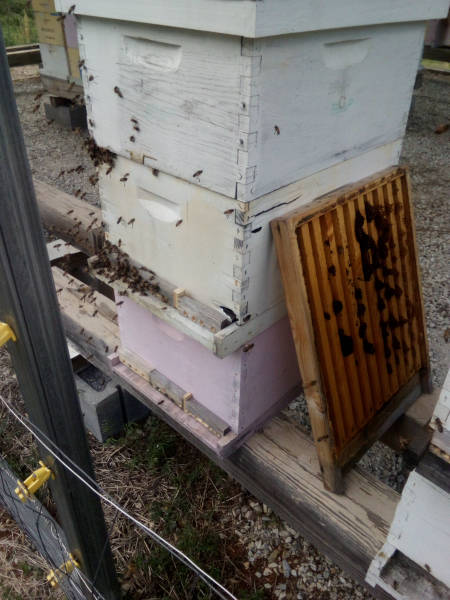
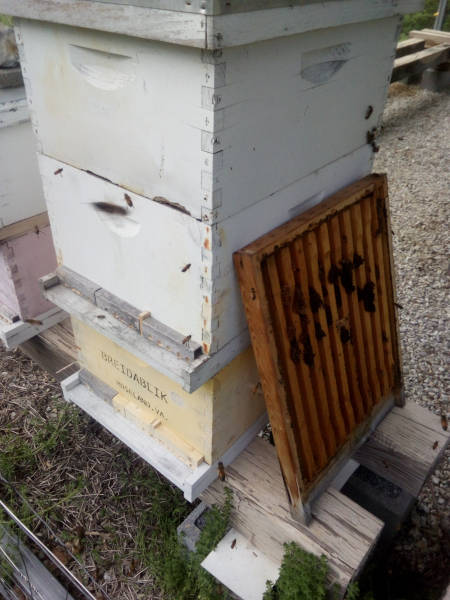
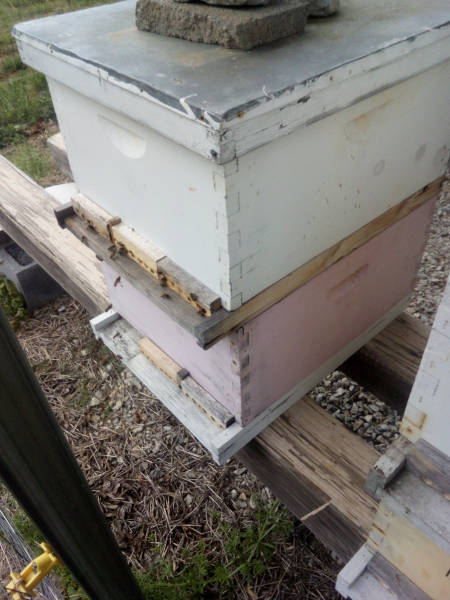
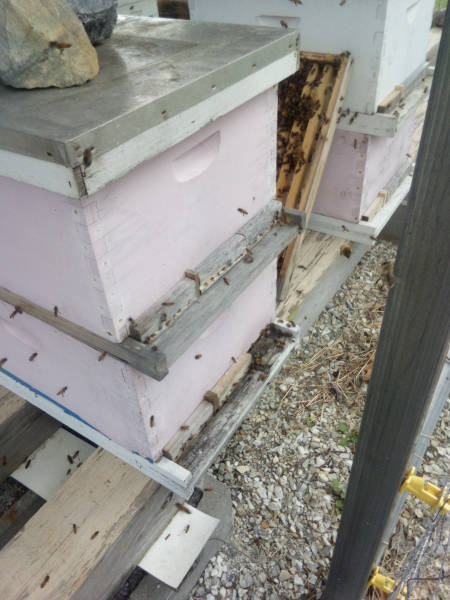
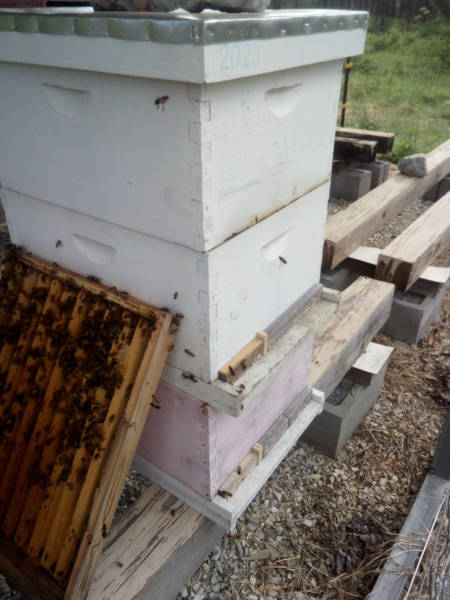

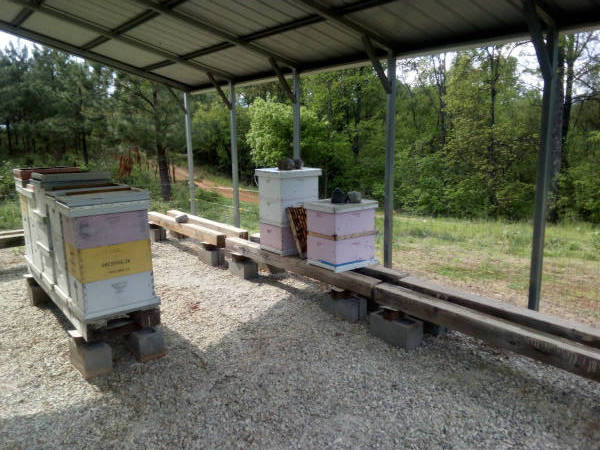 Anyway, I ended up with some empty hive bodies to melt down, and so I will probably be doing that soon, and writing a post about my hive melter. I also cleaned out the wax in my solar wax melters from late last fall - i left the old comb in their incase a bit more wax comes out. Also, i did find some small wax moth larvae in one of my hives, so we will see what happens, but i could end up with another empty hive later this summer. Also, and this is kind of a result of the crude nature with which i split the hives this time, but i noticed the bees seemed to favor heavily one or the other of each split. I tried to accommodate for this by swapping the positions of each hive to confuse the bees a little bit, though after a few days it appears that most bees have chosen one or the other, though there is still some activity on each of the weaker hives. I'm tempted to try and swap them again, though it's sort of a scary operation since i still do not have a proper hive lift setup, and lifting a stack of hive bodies, even only half full, is sort of at the limit as far my strength goes. I wish i could just go buy a lift, but it seems like in beekeeping you either need to have a bunch of money or you need to build everything yourself. Actually maybe that is not entirely accurate, though there definitely are certain items which can get overpriced(actually i feel that way about a lot of things in our modern economy). So anyway, i still do not have a good lift at the moment. On a side note, i am very grateful to my parents for buying me a very nice metal roof shed for my bees during the pandemic. It is much better to keep bees in the shade than in direct sun; there are many reasons for this.
Anyway, I ended up with some empty hive bodies to melt down, and so I will probably be doing that soon, and writing a post about my hive melter. I also cleaned out the wax in my solar wax melters from late last fall - i left the old comb in their incase a bit more wax comes out. Also, i did find some small wax moth larvae in one of my hives, so we will see what happens, but i could end up with another empty hive later this summer. Also, and this is kind of a result of the crude nature with which i split the hives this time, but i noticed the bees seemed to favor heavily one or the other of each split. I tried to accommodate for this by swapping the positions of each hive to confuse the bees a little bit, though after a few days it appears that most bees have chosen one or the other, though there is still some activity on each of the weaker hives. I'm tempted to try and swap them again, though it's sort of a scary operation since i still do not have a proper hive lift setup, and lifting a stack of hive bodies, even only half full, is sort of at the limit as far my strength goes. I wish i could just go buy a lift, but it seems like in beekeeping you either need to have a bunch of money or you need to build everything yourself. Actually maybe that is not entirely accurate, though there definitely are certain items which can get overpriced(actually i feel that way about a lot of things in our modern economy). So anyway, i still do not have a good lift at the moment. On a side note, i am very grateful to my parents for buying me a very nice metal roof shed for my bees during the pandemic. It is much better to keep bees in the shade than in direct sun; there are many reasons for this.
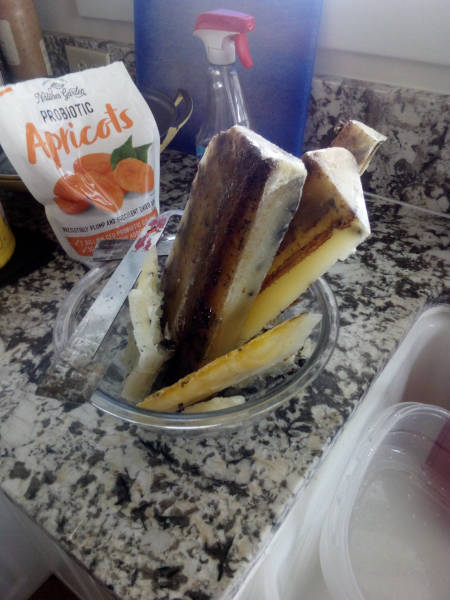
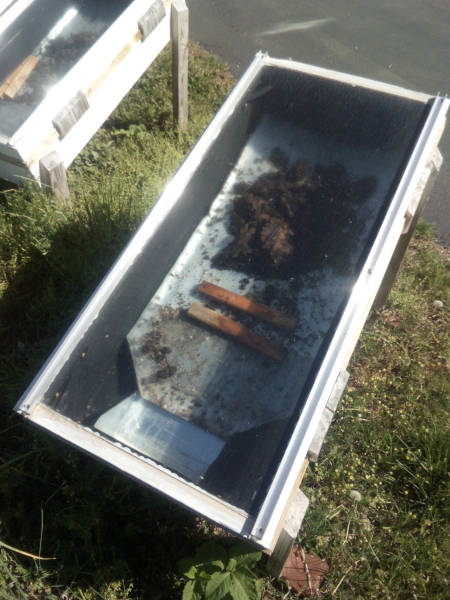

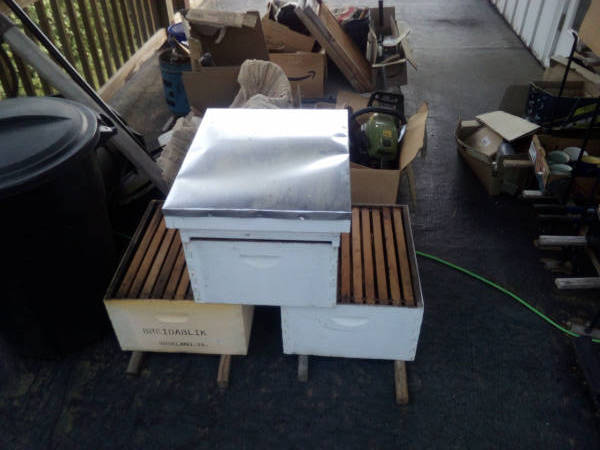 So, all in all, it is not a disaster. Things could be better, but at the very least i expect i should be able to make a small honey harvest, as well as collecting more wax. A lot can change in 2 months, so maybe it will be a big harvest - we will see. There are still a few small details i should take care of soon though, replacing all my little custom entrance reducers on my week hives, as well as putting out a few catch boxes for potential swarms.
(edit: I decided to post a short summary of the bee operation in a text-mode style i prefer to use when keeping notes on my bees. it is over on the mini-blog. here is a link: )
Anyway, on to the greenhouse/garden stuff. The weather has warmed up, and it was getting pretty hot in the greenhouse, and so i started moving the more frost hardy plants, like my flax and nettles, outside with the intention of planting them somewhere, though life happened and now frost danger is pretty much over, and so i moved everything outside. I still have not planted anything. I have flax, nettles, cantaloupe, watermelon, sunflowers, and tomatoes. Pretty soon it will be time to plant my pole beans outside. Hopefully we can get it all done soon when my helpers come home from vacation. Also, I still need to put the summer cover over my greenhouse(to protect it from sun). I'm planning to try out a clear plastic drop cloth in place of the blue tarp i used last year. I am also planning to modify the framing somewhat on the south side to allow for a bigger window/vent, and perhaps i can use the space for starters this summer(we will see).
So, all in all, it is not a disaster. Things could be better, but at the very least i expect i should be able to make a small honey harvest, as well as collecting more wax. A lot can change in 2 months, so maybe it will be a big harvest - we will see. There are still a few small details i should take care of soon though, replacing all my little custom entrance reducers on my week hives, as well as putting out a few catch boxes for potential swarms.
(edit: I decided to post a short summary of the bee operation in a text-mode style i prefer to use when keeping notes on my bees. it is over on the mini-blog. here is a link: )
Anyway, on to the greenhouse/garden stuff. The weather has warmed up, and it was getting pretty hot in the greenhouse, and so i started moving the more frost hardy plants, like my flax and nettles, outside with the intention of planting them somewhere, though life happened and now frost danger is pretty much over, and so i moved everything outside. I still have not planted anything. I have flax, nettles, cantaloupe, watermelon, sunflowers, and tomatoes. Pretty soon it will be time to plant my pole beans outside. Hopefully we can get it all done soon when my helpers come home from vacation. Also, I still need to put the summer cover over my greenhouse(to protect it from sun). I'm planning to try out a clear plastic drop cloth in place of the blue tarp i used last year. I am also planning to modify the framing somewhat on the south side to allow for a bigger window/vent, and perhaps i can use the space for starters this summer(we will see).
